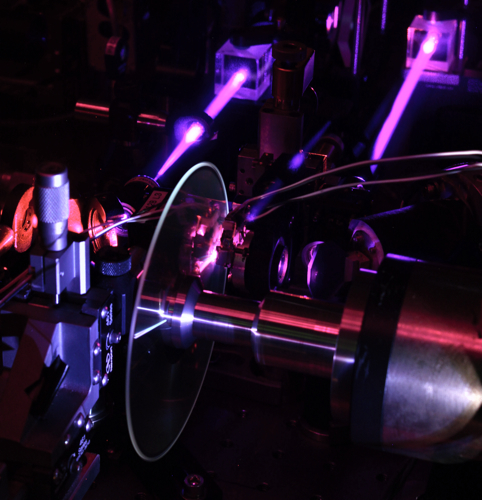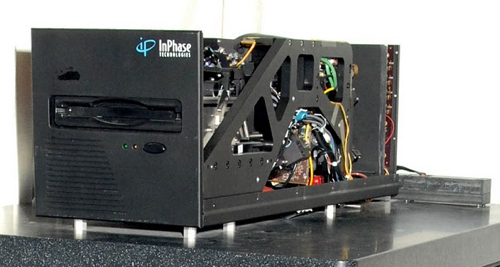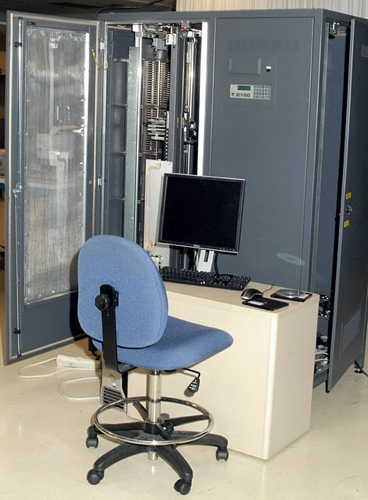Original URL: https://www.theregister.com/2011/08/08/ge_and_inphase_holographic_storage/
GE brings holographic storage back from the dead
Format might erupt in the sector
Posted in Channel, 8th August 2011 15:01 GMT
The dormant holographic storage volcano has rumbled, reminding us that it's not extinct and may yet erupt.
As a reminder, this optical storage format came hot on the heels of previous storage successes: compact disks, magneto-optical drives, DVDs, and then Blu-ray. Blu-ray never reached the same relative scale of popularity as DVDs, but at least it is ongoing, whereas the subsidiary that was Plasmon's UDO belched forth a lot of gas but little lava, and that flow came to a stop when Plasmon closed down.

Stromboli
Holographic storage appeared to show promise, but the interest subsided as InPhase more or less collapsed.
So where there once was such promise, only Blu-ray remained – a holographic remnant – and we all more or less supposed that holographic storage was over.
It isn't.
General Electric
General Electric has renewed interest in the format, coming up with a holographic platter. But, and a big "but", there is no drive manufacturer.
GE Global Research has run a demonstration that uses micro-holographic recording material and can record data at Blu-ray speed and, GE says, with drives not dissimilar from Blu-ray and DVD drives, not that such a drive exists. That means a blue laser is used.

GE holographic storage demonstration.
No actual disk that anyone could buy exists yet either. All the company has is a holographic recording media technology. It says that a GE holo disk, of Blu-ray physical dimensions, would "match the capacity of 20 single-layer Blu-ray discs, 100 DVDs or the hard drive of most laptop computers" – meaning a 500GB capacity. The development team is working on refining the material to support a 1TB or greater capacity disk.
What does Blu-ray speed mean? There are many Blu-ray recording speeds, ranging from 1X at 4.5MB/sec to 12x at 54MB/sec. A 12x equivalent GE holo disk writer would need 2.57 hours to fill up 500GB. That seems a long time, but a 1X equivalent speed would need 30.86 hours to fill up a 500GB disk, and that is an age.
GE is looking for partners to license its holo-recording media technology and build drives. The applications of this could be commercial archiving and the consumer market. With video downloads increasingly happening over the net, DVD sales crumbling, and Blu-ray videos not really taking off, the consumer application looks to be a forlorn hope.
The commercial archiving application would need demonstrably longer archive life than tape, and/or better recording and reading speed, and/or much easier media management. These are all unknowns with GE for now.
InPhase reviving – maybe
InPhase, with its 300GB, 20MB/sec Tapestry holographic drive, is not dead yet. The leading VC guy behind the company. Bart Stuck, the managing director of Signal Lake, told us that "a viable operating plan for taking InPhase to positive cash flow has been put together, by Art Rancis, CEO, and Jim Russo, EVP of Engineering, and it has been vetted by six different individuals with significant product development/marketing experience."

InPhase holographic storage drive
"This plan requires far fewer drives and media to be sold than any earlier plan, and hence requires far less time and money than any earlier plan to reach positive cash flow. InPhase can manufacture inside its Longmont CO facilities all drives, media and libraries needed to reach positive cash flow, and for now sees no need for outside contract manufacturers."

InPhase Terastore library
He says there are product orders in the pipeline: "InPhase has concentrated on archival storage markets, and is expanding its anchor customer base significantly right now; the orders in the pipeline are sufficient to take InPhase to positive cash flow [and] InPhase is recognising revenues from its patent portfolio through licensing."
He says InPhase has volume shipments planned to start next year and "InPhase intends to expand the holographic storage ecosystem through patent licensing with major partners around the globe; a number of agreements are already in place, and more are forthcoming."
As for GE's holographic initiative: "InPhase began recognising revenues from licensing media in 2002. [I'm] glad to see GE will be doing so next year."
This sounds promising. Let's hope it comes off and that InPhase's long march to deliver its holographic technology arrives at its destination. ®